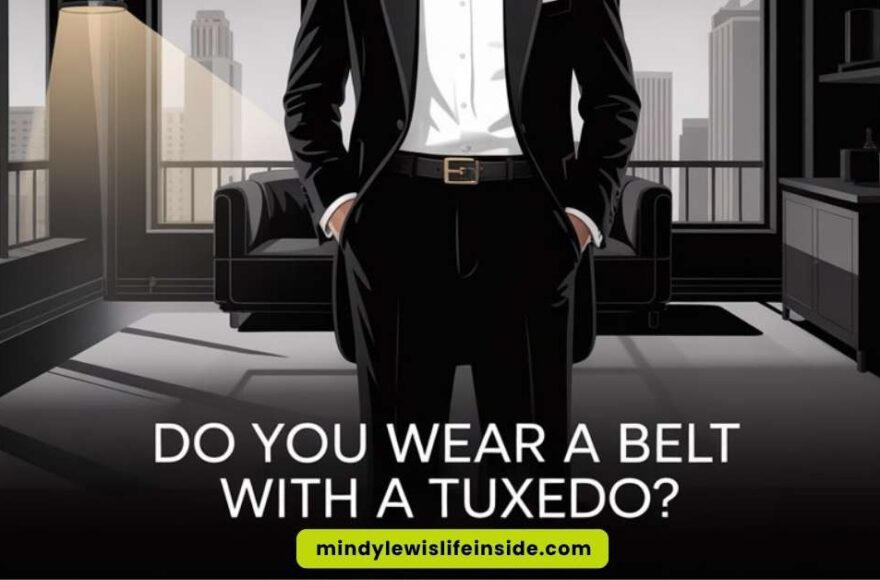Can You Wear Cufflinks with Any Shirt? Here’s the Answer
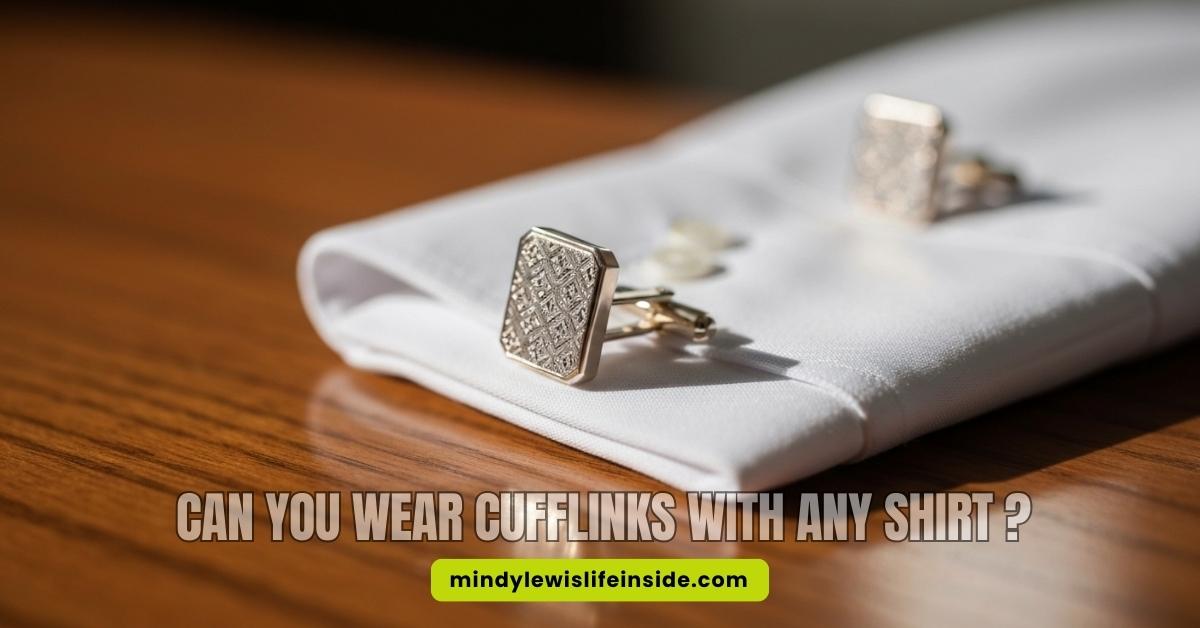
As an Amazon Associate, I earn from qualifying purchases
Have you ever looked at a pair of cufflinks and wondered if you can wear them with your favorite cuff shirt? Many people ask about this. Some think that cufflinks are only for fancy clothes or special times. But that is not always true.
You might find cufflinks are easier to use than you first think. In this guide, we talk about how you can wear cufflinks with any cuff shirt. We look at the classic French cuff and also at other shirts you wear every day. You will learn new ways to use a pair of cufflinks.
This can help you make your style better and wear cufflinks with confidence.
Understanding Cufflinks: What They Are and Their Purpose
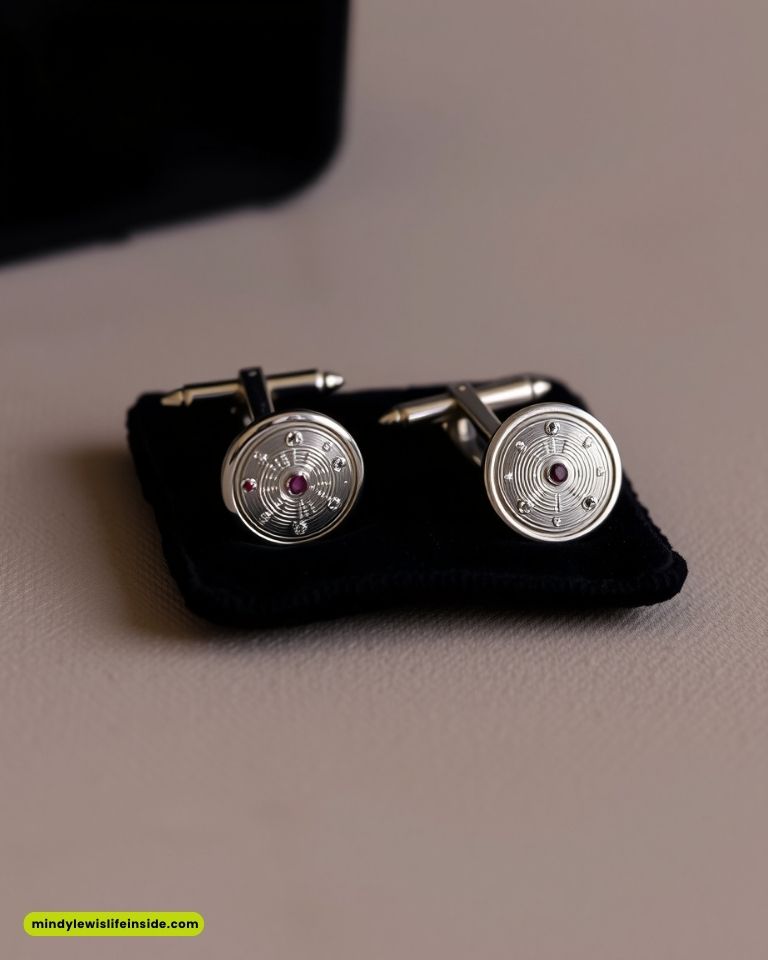
Cufflinks are small pieces that hold the cuffs of a dress shirt together. You might see them as a more stylish and easy-to-remove choice instead of regular buttons. At first, their job is to keep your cuffs closed, but the touch of style they give is what most people like.
There are many types of cufflinks, and this helps you show your own style. You can wear cufflinks at a formal event or for a more relaxed day out. They give your outfit a look that simple buttons do not offer. But, can you wear cufflinks with any type of shirt? This will all depend on the type of shirt cuffs you have.
The Role of Cufflinks in Men’s and Women’s Fashion
Cufflinks are now a popular accessory for both men and women. They help you add a touch of style and can make an outfit look better. For men, they are often worn as part of formal wear. People usually use them with a tuxedo or a suit for a wedding or a black-tie event. But cufflinks are not just for formal wear anymore.
The best part is that you can use cufflinks to show your personal style. Some people choose classic metal designs for business meetings. Others pick ones with fun or themed shapes for casual events. Cufflinks are not only for formal wear; you can also use them to give smart-casual outfits a more polished look.
Women can enjoy cufflinks too, especially in professional settings or at special events. Cufflinks can give a sharp and smart look, adding a great way to make your dress shirt or blouse stand out. This shows that this popular accessory can work for everyone, no matter the occasion.
History and Evolution of Cufflinks
The history of cufflinks goes back to the 17th century. This was a time when people did not use sewn-on buttons much. Cufflinks were made to help close shirt cuffs with ease. The first ones were very simple. Even so, rich people liked to use them as a nice detail on their clothes.
As years went by, traditional cufflinks started to show status and style. Some people would even get them made just for them, so they matched what they liked. Their use became more common. They were not just for formal occasions anymore. Many men started to wear different types of cufflinks with their everyday outfits. This led to new types of cufflinks, made for all kinds of events and settings.
Now, cufflinks are still used for big events, like weddings or work parties. But people also wear them with simpler looks to show some personal style. How cufflinks went from a simple tool to a top fashion piece shows their lasting charm and how people still love to use them in many ways.
Anatomy of a Cufflink: Parts and Functions
To learn how to wear cufflinks, you first need to know about their basic parts. The part people see most is the “face.” This is the part on the outside of the shirt cuff, and it is often the most decorative part. You will find faces that use simple shapes, fabric knots, or even have intricate designs with gems.
The face connects to the rest of the cufflink by something called a “post” or “bridge.” This part goes through the holes in the shirt cuff. At the back, there is a piece that keeps the cufflink in place. The back may be a metal bar that turns 90 degrees to lock, a fixed piece, or a short chain.
These parts are made to help the cufflink stay up and look good at the same time. To wear cufflinks, you need a shirt with special holes in the cuffs. These holes go through both sides and are made just for cufflinks, not for buttons.
Types of Shirt Cuffs Explained
Not all shirt cuffs are the same, and you need to know the difference if you want to wear cufflinks the right way. The type of shirt cuff on your dress shirt will tell you if you can, or should, use cufflinks with it. Some shirt cuffs are made just for cufflinks, while other types of shirt cuffs give you more choices in how to wear them.
When you understand the different types, you will be able to pick the right kind of dress shirt for your cufflinks—or pick the right types of cufflinks for your shirt cuff. The classic French cuff and the common barrel cuff each have their own look and set of rules.
Let’s go over the most usual type of shirt cuff and how well they work with your favorite types of cufflinks.
French Cuffs: The Classic Choice for Cufflinks
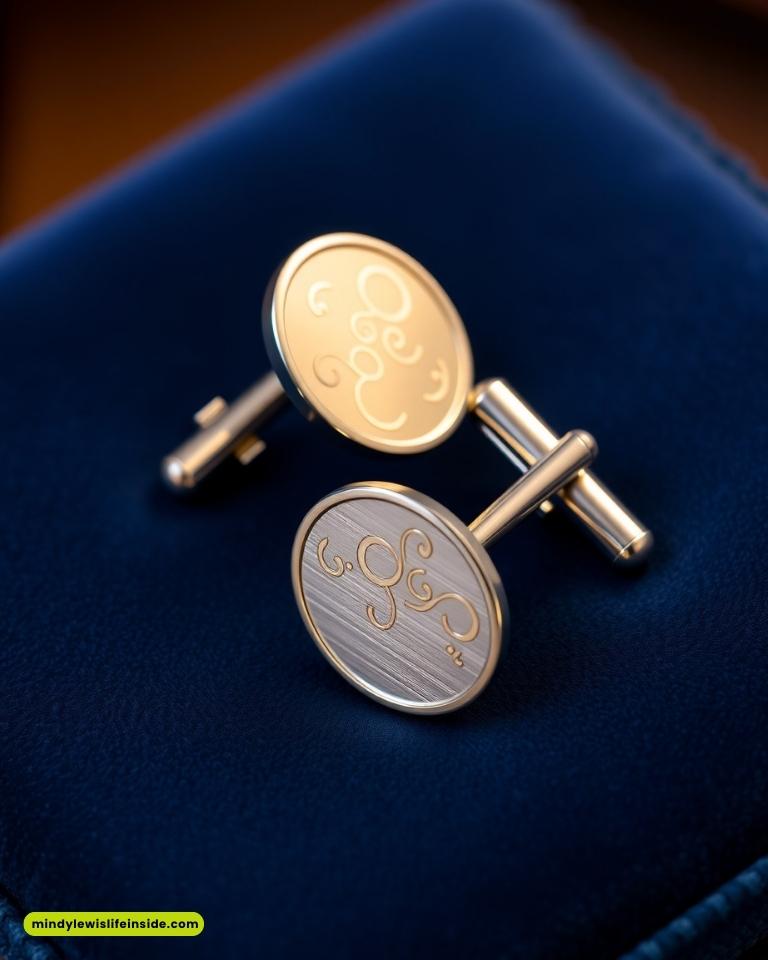
When you think of cufflinks, the French cuff is what most likely comes to mind. This is the most formal and traditional shirt cuff style, and it absolutely requires cufflinks because it has no buttons. A French cuff is longer than a standard cuff and is worn folded back on itself, creating a “double cuff.”
French cuff shirts are the go-to choice for black-tie events, weddings, and any formal occasion where you want to look sharp and sophisticated. Pairing them with classic gold or silver cufflinks creates a timeless and elegant look. When is it appropriate to wear cufflinks instead of buttons? A French cuff dress shirt gives you no choice—it’s cufflinks or nothing!
Here’s a quick comparison of French cuffs and standard button cuffs:
| Feature | French Cuffs (Double Cuffs) | Barrel Cuffs (Button Cuffs) |
|---|---|---|
| Closure | Requires cufflinks | Fastens with attached buttons |
| Appearance | Folded back, creating a double layer | Single layer of fabric |
| Formality | Highly formal | Less formal; suitable for daily wear |
| Versatility | Best for formal events and tuxedos | Works for business and casual settings |
Barrel Cuffs (Button Cuffs): Can You Use Cufflinks?
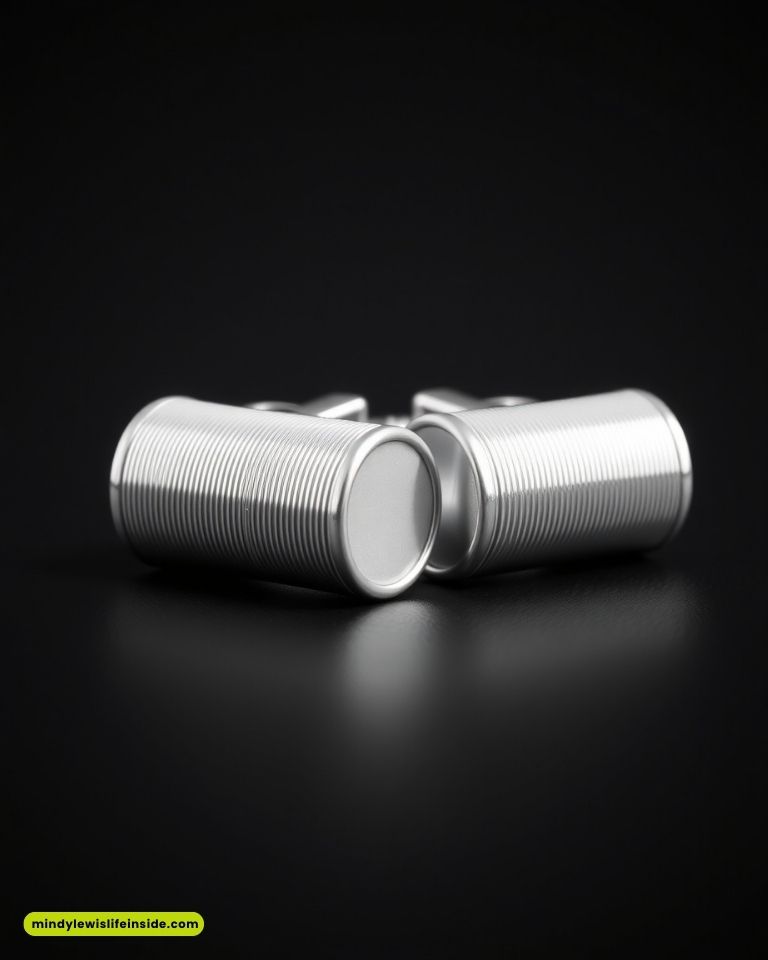
Barrel cuffs, or button cuffs, are found on most dress shirts. These shirt cuffs come with one or two buttons to keep them closed. You can wear the shirt at the office, out with friends, or throughout your day. But, can you use a cuff link on a shirt cuff that has regular buttons? The simple answer is: you cannot, unless you use something extra.
A standard cuff shirt does not have the other hole that is needed for a cuff link to go through. This does not mean you have no way at all. There are special adapters you can buy. These fit around the button and make a temporary hole, letting you use your cuff link. This tip helps you bring some style to a basic cuff shirt.
Remember, this works best for a casual look, not formal attire. If you want a real cuff link feel and look, you should pick a shirt cuff made for that. Still, this trick is a good way to try new things and mix up how you dress.
Convertible Cuffs: Versatility and Options
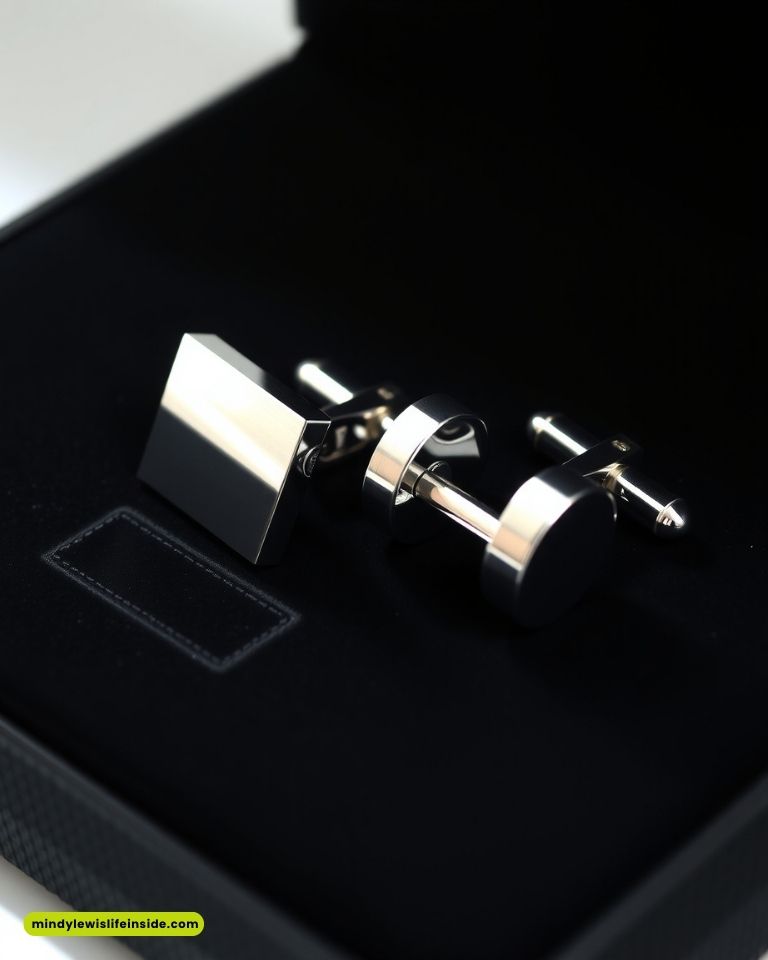
If you like to have choices, then the convertible cuff shirt is for you. The name shows what it does — a convertible cuff shirt gives you different ways to wear it. It lets you use either buttons or your favorite pair of cufflinks with it. This cuff style looks much like a normal barrel cuff, but it has an extra buttonhole next to the button that stays hidden.
With this smart design, you can use the button to fasten your cuff shirt on most days, like at work or when you want a simple look. On other days, maybe for an event or when you feel like showing off your choice of cufflinks, you do not use the button. You just use the holes for your pair of cufflinks instead.
Want to know if your shirt has convertible cuffs? Just look for a buttonhole right next to the button on the cuff. If you see it, you know you have one of these great cuffs. This lets you pick between a classic button look or using a pair of cufflinks, which makes your shirt one of the most useful and stylish choices out there.
Single vs. Double Cuffs: Differences and Suitability
The words “single cuff” and “double cuff” are used to talk about the two main types of shirt cuffs. It is important to know the differences between them to choose the best style for the day and the event.
A single cuff is the most usual one you will see on a cuff shirt. Single cuffs are common for barrel and convertible cuffs. It is just one layer of fabric that goes around the wrist. You close it with buttons, or sometimes, with cufflinks if it is a convertible cuff.
A double cuff is what makes a french cuff shirt special. Double cuffs use more fabric that is folded back, making two layers at the wrist. This style has no buttons and you have to use cufflinks to keep it closed.
The big difference between these different types is how dressy they look. A single cuff works well for most business or everyday clothes. But double cuffs are better for special events and important parties. You usually wear them for things like black-tie events, weddings, or anytime you want a sharp, polished look.
Which Shirts Can Be Worn with Cufflinks?
Let’s get right to it: what shirts can you wear cufflinks with? Even though it might seem like you can wear them with any shirt, you really need to look at the cuff style on your dress shirt. For the best look, wear cufflinks with a shirt made for them.
This means you should go for a classic French cuff shirt or a convertible cuff shirt. But that does not mean you cannot try cufflinks with other shirts. We will look at which shirts work well and see if you can add this smart detail to more casual shirts, too.
Dress Shirts Designed for Cufflinks
Some shirts are meant to be worn with cufflinks. These are ideal if you want a neat and sharp look. The type called french cuff shirt is the most common for this. French cuff shirts belong to formal wear. They have double cuffs that you fold back and lock with a pair of cufflinks.
You need these shirts for a full formal outfit. They are great for a formal event, like a black-tie party, a wedding, or a big business dinner. A french cuff shirt is the best way to show off a nice pair of cufflinks. Regular shirts with buttons just do not give you the same style.
There is also the convertible cuff shirt. You can use buttons or cufflinks on these. The shirt is versatile, but you still get something for a formal wear look with a pair of cufflinks. If you want your style to look smooth and classy, go with a shirt made to hold cufflinks. It is the best choice.
Casual Shirts: Is It Possible to Add Cufflinks?
You don’t have to save cufflinks just for fancy events. The rules around wearing them are now more relaxed. Can you wear cufflinks with more casual shirts? Yes, you can. You just need to get a bit creative and pick the right moment. It’s a great way to add a touch of personality to your look.
To make this work, go for a cuff shirt that has convertible cuffs. You might also use an adapter if you have a standard barrel cuff shirt. Try using cufflinks that are less formal or ones that show off your sense of style. Silk knots or fun designs work well. This can look good with smart casual shirts when you want to look sharp for different outfits, like holiday parties or any celebration. It’s a good time to show off your style and stand out.
Find the right balance with your clothes. Don’t pick very casual shirts, like those made of flannel or denim. Instead, go for classic smart button-up shirts. These are just right for a dinner out or any creative workplace where you want to make your style known.
How to Identify Cufflink-Friendly Shirts
Not sure if the cuff shirt in your closet works for cufflinks? It’s easy to see if your shirt cuff is good for cufflinks when you know what to look for. You just need to look at the cuff shirt closely. A shirt cuff that is made for cufflinks has special features for easy insertion.
The easiest thing to see is if there are no buttons on the cuff shirt. If the shirt cuff has holes but not any buttons, it is called a french cuff. This type of cuff shirt needs cufflinks. For convertible cuffs, you will see both a button and a buttonhole on each side of the opening. This setup lets you choose how to wear the cuffs.
Here’s a fast checklist to spot cufflink-friendly shirts:
- Check for cuff holes: There should be buttonholes on both sides of the shirt cuff.
- No buttons: If the shirt has holes but no buttons, this is a french cuff.
- Button and extra hole: If there is a button with a nearby buttonhole on the same side, it is called a convertible cuff.
- Ensure enough space: When you close the cuff, the holes need to line up. This makes sure there is enough space for easy insertion of the cufflink.
Special Occasion vs. Everyday Shirts
Deciding the right time to wear cufflinks depends on the event and the kind of shirt you have on. For special occasions like weddings or big parties where you need formal attire, cufflinks are not just okay—they are often expected, especially if you wear a tuxedo or fine suit.
At these events, you should go with a french cuff shirt. This is the best pick when you need to dress up more. Your choice of cufflinks should be simple and classy, such as silver, gold, or even mother of pearl. But, for casual occasions, cufflinks can show off your style. When you want that, you can use a more relaxed shirt, like a shirt with convertible cuffs.
Here’s a simple guide:
- Formal Events: Always wear cufflinks with a french cuff shirt. This is the gold standard for formal attire.
- Business & Smart Casual: Cufflinks go well with a convertible cuff shirt. They are perfect for important work meetings or stylish casual times.
- Everyday Wear: Most will use buttons, but a soft cufflink on a convertible cuff can add some style.
Button Cuffs vs. Cufflink Cuffs: Key Differences
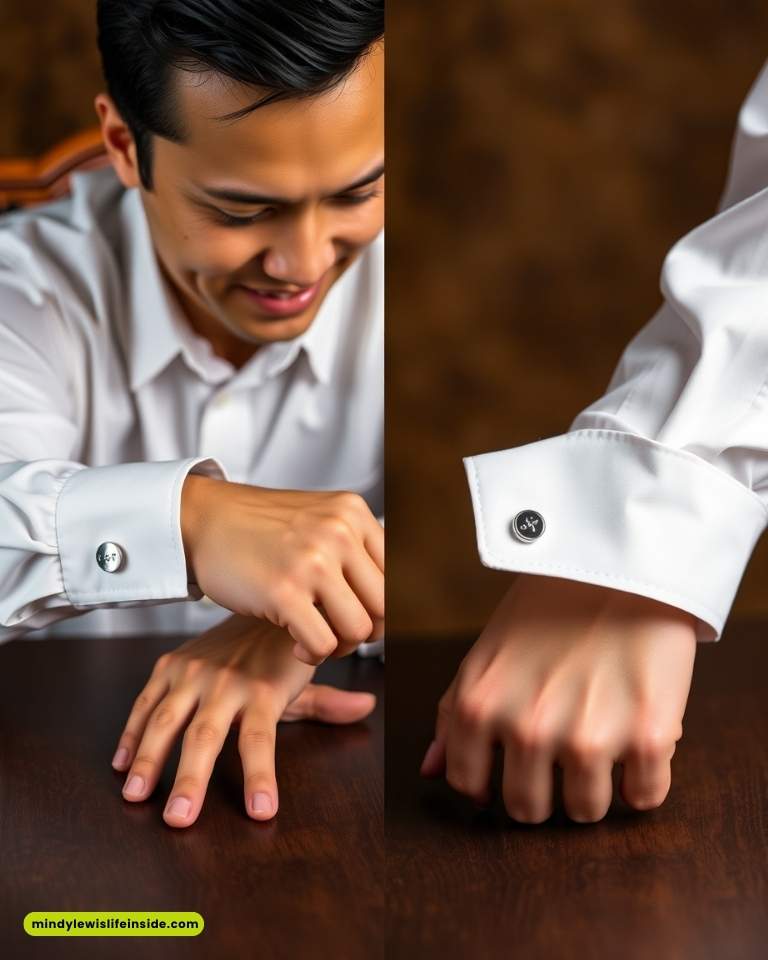
There are two main ways to close a shirt sleeve. You can use button cuffs or cufflink cuffs. They both help keep the shirt sleeve closed, but they are quite different when it comes to style and formality.
Button cuffs are a good choice for most shirts you wear every day. They are easy and fast to use. Many people pick them for this reason.
Cufflink cuffs bring a touch of elegance to what you wear. They let you show a bit of your own style. These two different types are not easy to swap between most shirts. So, it helps to know the differences. We will look at how both work, how they look, and where you can wear them. This will help you get the best style for your needs.
Functionality and Appearance
The way button cuffs and cufflink cuffs work and how they look are very different. Button cuffs are simple and easy to use. They are sewn right onto the shirt, so you just button them and you’re done. They are great for wearing every day. Their look is clean and simple, and they match the shirt in a nice way.
Cufflink cuffs, like French cuffs, take a bit more work to put on. But when you put in that extra step, you get a very polished look. These cuffs add a touch of elegance and let you use different styles of cufflinks to show off your style. This small detail can make a big difference and shows that you pay attention to the little things, which regular buttons do not.
Here are the key contrasts:
- Functionality: Buttons stay on the shirt and are easy to fasten. Cufflinks can be removed and you need to put them in by hand.
- Appearance: Button cuffs are plain and flat. Cufflink cuffs stack up and stand out more on the wrist.
- Personalization: Buttons do not give much choice. Cufflinks offer many different styles so you can show your own look.
- Overall Vibe: Button cuffs are good for everyday and simple outfits. Cufflink cuffs are more decorative and give a touch of elegance.
Formality Level and Event Suitability
When you choose between button cuffs and cufflinks, it often depends on what the event is like. Button cuffs are great for most times, like daily office work, casual get-togethers, and normal business meetings. They always look right, are easy to use, and suit these moments well.
Cufflinks, on the other hand, are made for events with formal attire. You will see them at weddings, galas, and black-tie dinners. Wearing cufflinks at these times is a sign that you respect the event and want to show a smart sense of style. They are a great way to finish off a tuxedo or a good suit.
At big business meetings or special networking events, using cufflinks with a convertible cuff shirt helps you look even more sharp. It shows others you pay attention to your look and gives you confidence. The choice you make also sets the tone for your whole outfit.
Common Myths about Shirt Cuffs and Cufflinks
There are some myths about cufflinks. These can make you think twice before you wear cufflinks. Some people say that cufflinks are made only for tuxedos and big formal events. This is not true. It is right that cufflinks are needed for black-tie looks. But now, people also use them in business clothes and smart casual outfits. The right cuff link can go well in many places.
Many believe you have to use a special shirt cuff, like a french cuff or convertible cuff shirt, to wear cufflinks. In fact, you do not have to. That helps the cuff shirt be simple to wear. With handy cuff link adapters, you can add a cuff link to your regular shirt cuff. This gives your look a laid-back touch.
Some people also think the choice of cufflinks is very limited. There’s actually a wide range. You can pick from basic metal ones or get fun styles. You do not need special holes for every cuff shirt. You are not stuck with formal looks only. So, these myths should not stop you. All of us can try out this cool accessory.
Beginner’s Guide: How to Wear Cufflinks with the Right Shirt
Ready to start your journey in learning how to wear cufflinks? It is easier than you might think. This beginner’s guide will help you know all the steps you need. It shows how to pick the right type of shirt and how to match your cufflinks with your outfit. We will talk about the basics.
The most important thing is to make sure your shirt is the right type of shirt for cufflinks and the cufflinks match the dress code. With some easy tips, you can add this sharp touch to your wardrobe. You will be able to look good for any occasion.
What You Need to Get Started: Essential Items
Getting started with cufflinks is easy. You only need a few basic things. You do not need to buy a big collection right away. All you need is to have the right items. The most important thing is a shirt that works with cufflinks.
Your first pair of cufflinks should work for many looks. Simple metal cufflinks in silver or gold are a good choice. You can wear them with a formal shirt or with a more relaxed button-down. Over time, you can try cufflinks made with precious stones or special materials when you feel ready.
Here’s what you need to get started:
- A shirt with French cuff or a shirt that takes cufflinks
- One pair of cufflinks that goes with most styles, like classic silver or gold
- A mirror so you can see your final look
- An event or gathering to use them!
Picking the Right Shirt for Cufflinks
Choosing the right type of shirt is a key step when you want to wear cufflinks the right way. French cuffs or convertible cuffs are your best picks. These shirts are made for cufflinks. They help you get a good fit and a neat look.
When you pick your shirt, look at both the color and the fabric of your shirt. You want a look that feels put together. The cufflinks should go well with the shirt and not fight for attention. A white or light blue shirt is always a good choice. It works as a basic background that fits with almost any style of cufflinks.
Here are a few tips to help you find the right type of shirt:
- Prioritize cuff style: Check that there are French or convertible cuffs on the shirt.
- Consider the color: If the shirt is a neutral color, your cufflinks can really stand out in a cool, soft way.
- Check the fit: Make sure the shirt fits well at your wrist. This way, the cuffs show off your cufflinks in the best way.
Taking the time to pick the right type of shirt, with the right cuff style and fabric, helps you create a cohesive look every time.
Choosing Cufflinks to Match Your Shirt and Style
Once you have the right shirt, it’s time for the fun part: picking your cufflinks. Your choice of cufflinks should match both the occasion and your own personal style. For formal times, choose ones made from classic materials like sterling silver, gold, or rose gold. Cufflinks with mother-of-pearl or plain onyx are also good options that never go out of style and give off a classy vibe.
In a business or smart-casual setting, you have more ways to show who you are. You can match your cufflinks to other metal things you wear, like your watch or the buckle of your belt, to have a look that goes well together. This is also the area where you can show your style with a design you like.
For casual occasions, don’t worry about trying something new. You can wear silk knots, colorful enamel, or even fun novelty cufflinks to add a playful touch to your clothes. Just make sure what you pick fits your look and does not take over the rest of your outfit.
Step-by-Step Guide: Wearing Cufflinks Correctly
Putting on cufflinks for the first time can look hard, but it is simple once you know how to do it. Here is a step-by-step guide to help you wear cufflinks for a good fit and a polished look. You will need a shirt with the right holes. Everything else is easy.
Follow these steps to make sure your cuffs look neat and your cufflinks are shown off well. Let’s go over five easy steps so you can get the hang of this skill fast.
Step 1: Select the Appropriate Shirt
The first step to wearing cufflinks is picking the right type of shirt. You need a cuff shirt that has either French cuffs or convertible cuffs. If you try to use cufflinks on a regular shirt cuff without any help, it will not work well. It can make you feel annoyed, and your shirt may not look good at all.
Before you grab your cufflinks, check if your shirt is ready for them. For a formal event, you should always go for a French cuff shirt. If you have a business meeting or you want to look sharp at dinner, a convertible cuff shirt is a good choice. It gives you the choice to wear the cuffs with or without links.
Take a close look at your shirt cuff. To check if it fits, look for the double-fold that shows a french cuff, or spot the extra buttonhole that means you have convertible cuffs. Picking the right cuff shirt brings you one step closer to a neat and stylish look that people will notice. Having the right shirt is key if you want to look sharp and put together.
Step 2: Prepare the Shirt Cuffs
Once you have your shirt, the next thing to do is get the cuffs ready. For a french cuff, start by putting out your arm. Fold the shirt cuff back over itself so both edges match up. You want to get a smooth, straight line where the two pieces of fabric meet.
Next, pinch the two open sides of the shirt cuff so they are flat and facing away from your wrist. The inside part of each side of the cuff should touch the other. This gives you the classic “kissing” cuff style.
The most important part here is making sure the cufflink holes are lined up. Make sure all four holes—the two on each side of the cuff opening—are in a line. This helps with easy insertion of the cufflink when you get to the next step.
Step 3: Insert the Cufflinks
With the cuff holes lined up, you can start putting in the cufflinks. Hold the cufflink by the front part that shows the design. Check that the back is set to its slimmest point. For a bullet-back or whale-back cufflink, turn the toggle so it matches up with the post.
Now, gently push the post through all four holes. Start on the outside of the cuff and go in towards your arm. Keep the decorative part on the outside of your wrist so people can see it. This might take a little skill at first, but with practice, it gets easy.
Here’s how you finish putting it in:
- Push through: Move the cufflink post through all the layers of cloth.
- Secure the back: When it’s all the way in, flip the toggle or fasten the back part.
- Visible face: Make sure the decorative side points out when you let your arm hang down.
Step 4: Secure and Adjust for Comfort
After you put in the cufflink, the last step is to make sure it stays in place. How you do this will depend on the type of cufflinks you have. For most of the common types, like bullet-back or whale-back, you need to turn the small metal bar until it is flat and sideways. This step keeps the cufflink from falling out.
With other types of cufflinks, like fixed-back or chain-link, the way they are made already keeps them in place. You just need to make sure it is sitting the right way. After the cufflink is in, check how it feels to you. The cuff should be close to your wrist, but not squeezed too tight.
There should still be some space so you can move your wrist. It should not be too loose and not too tight. If it feels wrong, you might need to fix how the cuff is folded or check if the cufflink metal bar is grabbing too much fabric.
Step 5: Final Check for Fit and Style
The last step is a quick check to make sure everything looks good. You need to look in the mirror and see how the cufflinks fit and work with your style. The decorative side of the cufflink must show on the outside of your wrist. This adds a touch of elegance to your sleeve.
Make sure the cuffs are neat and look even. A cufflink that fits the right way helps to give you a strong, cohesive look. It shows you care about details and have your own sense of style. The cuff must stick out a little bit from under your jacket or blazer. That way, people can see the cufflinks.
This final check helps you have a clean and tidy look. It is a small thing, but it makes your outfit better. It shows you know how to wear cufflinks the right way.
Can You Convert a Regular Shirt for Cufflinks?
What if you have a favorite shirt that has button cuffs? Maybe you want to wear cufflinks with it. You might ask if you can change it. The answer is yes, you can. You do not need to get a new shirt just to use this small accessory.
There are some ways to turn a normal shirt cuff into one that can hold cufflinks. Some ways are quick and easy. A few are more lasting, like changes done by a tailor. We will go over each method. That way, you will be able to wear cufflinks with more shirts you have.
Adapters, Hacks, and DIY Solutions
If you do not want to make a big change to your cuff shirt, you do have some easy options. There are many smart tricks, creative add-ons, and simple DIY fixes that you can try. The fastest and most common way is to use cufflink adapters. These small pieces wrap around the button on your standard shirt cuffs. They help make a space for a cufflink without making any lasting changes.
This is a good way for people who want to try cufflinks on shirts that are not made for them. If you want a hands-on way, you can take off the button, sew up the old buttonhole, and cut a small new hole on the cuff to line up with where the old buttonhole was. This way, you turn your everyday shirt into one you can use with cufflinks.
Here are some fast ideas:
- Cufflink Adapters: The easiest way for any button-cuff shirt, and you can undo it anytime.
- Button Removal: This is a do-it-yourself tip if you want to make a more lasting change by adding a new hole.
- Silk Knots: Sometimes these can fit through a normal buttonhole, but it may not always work well.
Professional Alterations: Pros and Cons
For a more polished and long-lasting solution, you can bring your dress shirt to a professional tailor. A good tailor will know how to change your shirt. They can change a simple button cuff into a cufflink-ready cuff by making a French cuff or a cuff that lets you use both buttons and cufflinks. This is a great way if you have a high-quality shirt that you really like and want to improve.
The biggest “pro” of this way is the look and feel you get at the end. A tailor will make sure the new holes for the cufflinks are put in the right spot and have neat stitching, so your shirt will look like it came from the store. Do-it-yourself ways do not often match this look. It’s a great way to make your clothes more personal.
But there are some “cons.” Professional changes do cost money, and they may not be worth it for a cheap shirt. It also takes time for the tailor to finish the work. Before you say yes, think about the price and how much you value the shirt.
Risks and Limitations of Shirt Conversion
While turning a shirt into one that fits a pair of cufflinks can be a good idea, you need to know the risks and what you can and can’t do. If you try to do it yourself, you could hurt the shirt fabric, make holes that look rough, or get the shirt cuff in the wrong place. These mistakes make it hard to use a pair of cufflinks the right way.
Even when you go to someone who works with clothes, there are still limits. Not every shirt is right for this. The part of the shirt cuff has to be strong enough to hold the holes and the weight of cufflinks. If the fabric is light or gentle, it might not work well.
Also, changing a shirt this way doesn’t change what style it really is. If it’s a casual piece, it will always look casual, even when you add a pair of cufflinks. The best shirts for this fix are good dress shirts that you want to make more formal or get more use out of. It’s not meant to completely change what your shirt is all about.
Conclusion
Cufflinks can help make your outfit look better. They add a nice touch to your style. It is good to know the different types of shirt cuffs and how to wear cufflinks the right way. This will help you make good choices about fashion. There are the classic French cuffs and other, more casual options. It is important to know when and where you should wear cufflinks.
Do not let wrong ideas about cufflinks stop you. There is a lot you can do with these little accessories. If you want to improve how you dress, try to wear cufflinks with different types of shirts. Feel free to ask me if you have any questions or want more help. Have a good time styling!
Frequently Asked Questions
Can you wear cufflinks with shirts that have button cuffs?
Yes, you can wear cufflinks with a cuff shirt that has button cuffs, but not right away. You will have to use special adapters that create a loop, so you can put a cuff link in. If you want a more lasting way, you can ask a tailor to change the cuff shirt for you.
Do you need special holes on your shirt sleeves to wear cufflinks?
Yes, a cuff shirt has to have holes on both sides of the shirt cuff so you can wear cufflinks. This is how a french cuff dress shirt is made. A convertible cuff can have a button and another hole, which lets you wear cufflinks or use the button.
Are cufflinks suitable for casual shirts or only for formal wear?
Cufflinks are not only for formal wear. You can use them with tuxedos and suits on formal occasions. There are different types of cufflinks, like silk knots or ones with a fun design. These can add a touch of style to smart casual shirts, too. This helps you look good even when it is not a very formal day.
Can I convert a regular shirt to fit cufflinks?
Yes, you can change a regular shirt so you can use cufflinks with it. There is a quick fix where you use cufflink adapters as a do-it-yourself way. Or, you can have a tailor change the shirt cuff for you. This will make the shirt work with cufflinks in a better, more polished way.
As an Amazon Associate, I earn from qualifying purchases








